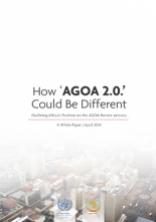How ‘AGOA 2.0.’ Could Be Different

Set to expire in September 2015, the African Growth and Opportunity Act (AGOA) is the central pillar of trade and economic relations between the United States and sub Saharan Africa. As a result, discussions are currently underway to determine the nature of post-2015 trade & economic relations.
Both the Obama Administration and United States Congress have requested assessments of the unilateral program’s 13-year existence and its future potential. Critical questions on the program’s achievements, failures, strengths and shortcomings are being posed. This paper intends to contribute to the ongoing deliberations by outlining the views of AGOA eligible countries on the AGOA review process.
After a thorough examination of AGOA, we find that although trade flows between the program’s beneficiaries and the U.S. have grown nearly three-fold - 70% of this is because of AGOA - these flows still do not reflect the natural symbiosis that should exist between the world’s largest economy, and the world’s fastest growing region.
This sub-optimal utilization of AGOA has, largely been due to Africa’s supply-side issues such as capacity constraints, infrastructural challenges, institutional insufficiency, economic setbacks, marketing and merchandising inexperience, political risk and problems related with U.S. market requirements.
Besides, the uncertainty and limited time frame associated with the AGOA legislation itself has also posed additional challenges; diminishing incentives for American multinationals to trade with and invest in Africa.